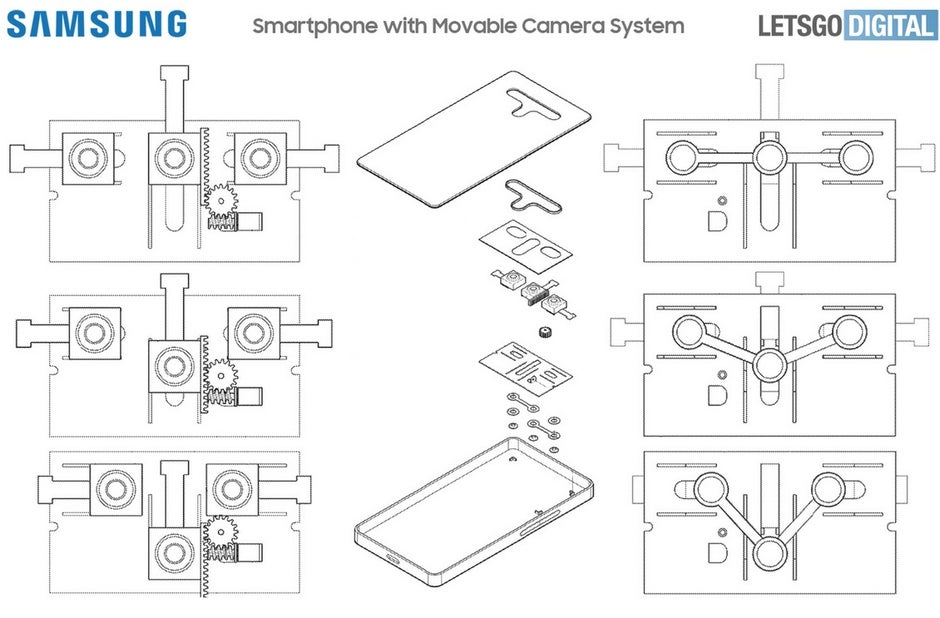Samsung has filed a patent application with the United States Patent and Trademark Office (USPTO) showing how mobile camera sensors can be used to help users switch between two different lenses with different apertures. First spotted by LetsGo Digital, this will allow the user to change the aperture used for a specific photo depending on the lighting conditions. When it comes time to take a photo in dark conditions, switching to a lens with a larger aperture will allow more light.
Samsung files patent for variable aperture camera system
the The Galaxy S9 was Sammy’s first to use a dual aperture system and it allowed the camera’s aperture to widen to f / 1.5 in low light conditions and narrow to f / 2.5 in bright conditions. The patent, titled “Mobile Cameras with Adaptive Field of View (FoV)”, shows a three-camera configuration with wide-angle, ultra-wide-angle and telescopic lenses with each sensor capable of changing position. The camera in the middle can move up and down while the other two sensors move sideways.
Images from Samsung’s patent application. LetsGo Digital Credit
Additional cameras can be added, but for illustration purposes, assume there is a three camera setup with a wide angle lens in the middle, the ultra wide lens on the left, and the telescopic lens on the right. In another arrangement, the camera sensors are arranged in a triangular configuration and are placed behind secondary objectives with different apertures. When arranged in a triangle, the cameras have a larger aperture allowing more light to reach the sensor. When arranged horizontally, the opening narrows.
When Samsung used a variable aperture in the Galaxy S9 and Galaxy S10, it offered the functionality only with the wide angle camera. With the technology presented with the patent, the three cameras mentioned would have the ability to change the aperture depending on the lighting conditions.
In addition to controlling the aperture size to suit the lighting conditions, those who enjoy taking portraits with the bokeh blurry background will be able to use a large aperture to help create the bokeh blurry background. When taking pictures of a city or landscape, a smaller aperture is recommended to create sharper images.
Another thing to consider is that there are a lot of parts and moving parts involved that can easily be damaged if the phone is dropped suddenly. Despite the fragility of this system, it is believed that other phone makers are working on something similar. LetsGo Digital says that a year ago it reported that Xiaomi was trying to develop a mobile camera.
Samsung needs to do something to spark interest in its flagship Galaxy S line.
If Samsung decides to use this system with future smartphone models, it could take some time for the patent technology to catch on on a Samsung phone. But stranger things have happened, and perhaps we shouldn’t be in too much of a hurry to rule out the possibility that Samsung will include this technology with next year’s flagship Galaxy S22 series or 2023 Galaxy S23 lineup.
The Galaxy S21 series got off to a quick start earlier this year, but then faded badly. A moving camera system could provide the manufacturer with the necessary boost to run the flagship line which has sold fewer units than even the 2019 Galaxy S10 series. Can an improved camera system with multiple moving parts be the answer for the Korean firm?
Samsung needs to do something because if it fails to regain its momentum it will find itself staring at Xiaomi in the global smartphone shipping charts.
In case you’re curious, the patent has been filed by Samsung Electro-Mechanics. This Samsung unit produces several components, including printed circuit boards, camera modules, network modules and semiconductor substrates.


